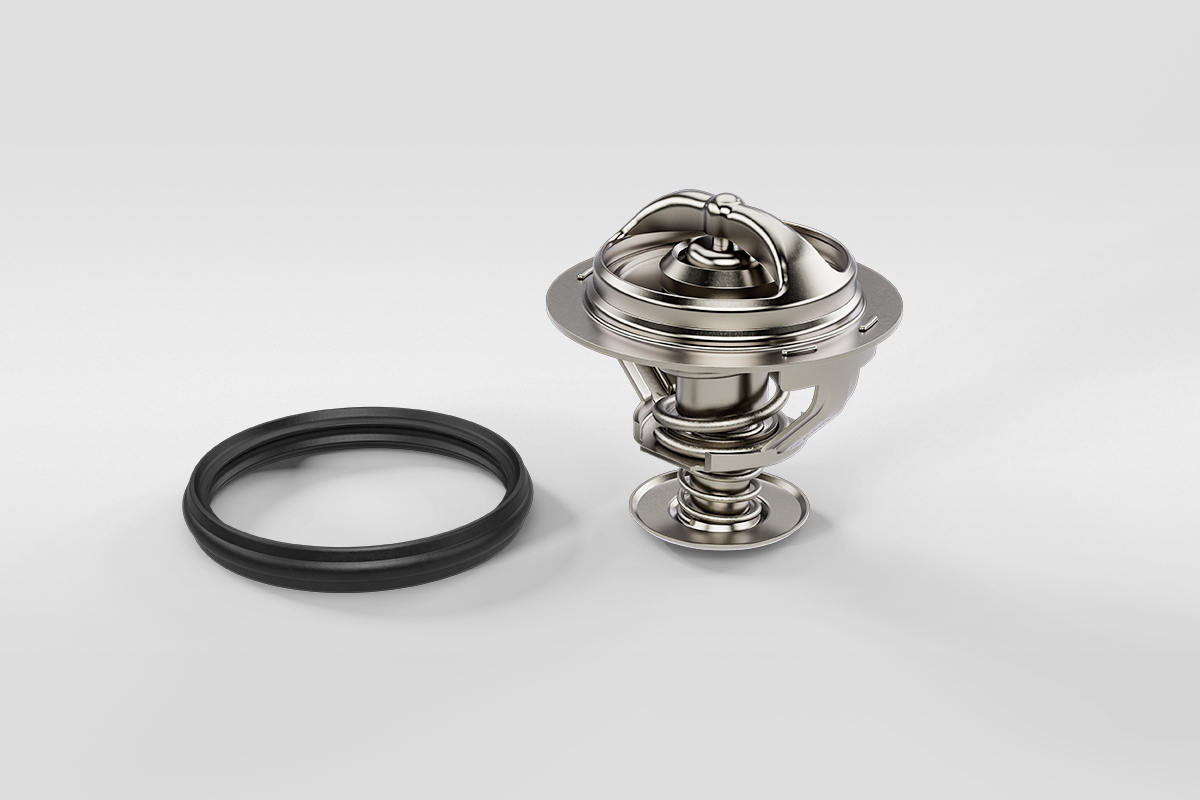
Thermostats from Continental
Efficient.
Genuine quality from a single source
Thermostats are inconspicuous but essential components whose job is to bring a vehicle’s engine as quickly as possible to an optimum operating temperature and keep it there. Continental’s thermostat solutions ensure that engines deliver top performance at all times, use as little fuel as possible and have low levels of harmful emissions. With its know-how as a global corporation, Continental provides innovative solutions from a single source.
Maximum performance. Minimum emissions.
- OEM quality
- Many years of experience as an original equipment manufacturer
- Maintenance-free thermostat solutions
- Designed to be compatible with the service life of the vehicle
- Reliable, low-wear engine operation
- Constant optimum temperature range
- Higher engine efficiency
- Lower emissions
- All products from a single source
Cartridge thermostats and housing thermostats
A wax-type thermostat is a pressure-resistant cartridge that is filled with wax. When the engine coolant becomes warmer, the wax melts and expands. Depending on the temperature, the wax opens a valve that allows coolant to flow to the radiator. If the temperature of the coolant drops below a predefined point, a spring returns the valve to its original position.
Heated Pin thermostats
Heated Pin thermostats (Map-controlled thermostats) also use wax. However, the temperature is regulated not only by the engine and coolant, but also by means of electric heating. In this way, modern vehicles can further improve the effectiveness of their cooling systems. For example, in situations requiring significantly increased performance, cooling of the engine can begin earlier. This boosts engine efficiency and ensures a long service life. As an added advantage, careful integration of thermostats into the coolant circuit can improve climate control in the vehicle.
Why is it so important for a thermostat to work properly?
A faulty thermostat can have serious consequences for a vehicle. If it fails to operate in the fully closed state, this can raise the pressure in the cooling system and cause damage to the cylinder head, cooling system and engine mechanism. If it is defective in the fully open state, the engine will not reach its proper operating temperature. In both cases, fuel consumption also increases.
Genuine quality from a single source
Thermostats are inconspicuous but essential components whose job is to bring a vehicle’s engine as quickly as possible to an optimum operating temperature and keep it there. Continental’s thermostat solutions ensure that engines deliver top performance at all times, use as little fuel as possible and have low levels of harmful emissions. With its know-how as a global corporation, Continental provides innovative solutions from a single source.
Maximum performance. Minimum emissions.
- OEM quality
- Many years of experience as an original equipment manufacturer
- Maintenance-free thermostat solutions
- Designed to be compatible with the service life of the vehicle
- Reliable, low-wear engine operation
- Constant optimum temperature range
- Higher engine efficiency
- Lower emissions
- All products from a single source
Cartridge thermostats and housing thermostats
A wax-type thermostat is a pressure-resistant cartridge that is filled with wax. When the engine coolant becomes warmer, the wax melts and expands. Depending on the temperature, the wax opens a valve that allows coolant to flow to the radiator. If the temperature of the coolant drops below a predefined point, a spring returns the valve to its original position.
Heated Pin thermostats
Heated Pin thermostats (Map-controlled thermostats) also use wax. However, the temperature is regulated not only by the engine and coolant, but also by means of electric heating. In this way, modern vehicles can further improve the effectiveness of their cooling systems. For example, in situations requiring significantly increased performance, cooling of the engine can begin earlier. This boosts engine efficiency and ensures a long service life. As an added advantage, careful integration of thermostats into the coolant circuit can improve climate control in the vehicle.
Why is it so important for a thermostat to work properly?
A faulty thermostat can have serious consequences for a vehicle. If it fails to operate in the fully closed state, this can raise the pressure in the cooling system and cause damage to the cylinder head, cooling system and engine mechanism. If it is defective in the fully open state, the engine will not reach its proper operating temperature. In both cases, fuel consumption also increases.


